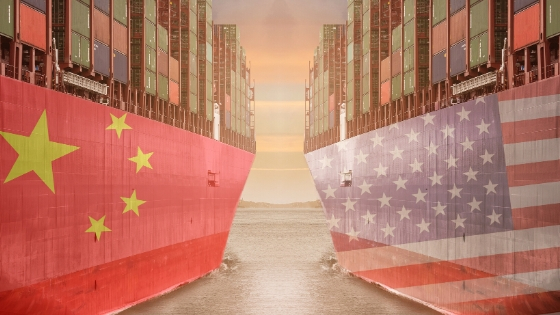Editor’s note: The key sentence is this “It turns out China depends more on exports to the U.S. than America does on Chinese imports.”
Trump’s tariffs were an effective weapon, and Beijing had to bend as its economic growth slowed.
The U.S. and China signed a “phase one” trade deal Wednesday—a meaningful victory in an economic conflict that’s been building for decades. The agreement is a credit to President Trump’s China strategy and a mark against his detractors.
When Mr. Trump took office, he quickly implemented targeted tariffs to pressure China into ending its abusive trade practices. Critics relentlessly assailed that decision. They contended that his “trade war” would crash the U.S. economy.
It turns out China depends more on exports to the U.S. than America does on Chinese imports. Where U.S. companies rerouted supply lines with the speed only free enterprise can attain, the tariffs wrecked the delicate balance of China’s state-managed markets. Last year China posted three straight quarters of around 6% annualized growth in gross domestic product. In the third quarter, it hit 6% flat, its weakest result in nearly three decades. The reality is likely worse than the official numbers. Economists have questioned the accuracy of China’s official economic data for years. Based on discussion with Asian business leaders and our personal experience, neither of us would be surprised if China’s real growth is in the 0% to minus-2% range.
The fight with China had to come eventually and Mr. Trump’s deregulation and tax reform helped position the U.S. economy to endure it. For years, Chinese corporations have brazenly stolen U.S. intellectual property and dumped goods on the American market in violation of U.S. law. Meanwhile, Beijing has regularly subsidized strategic industries such as telecommunications and energy, required foreign firms to transfer their technology in exchange for access to the Chinese market, and manipulated its currency to create artificial trade advantages for Chinese companies.
Beijing got away with this behavior because it permitted remarkably low wages and dismal working conditions. By exploiting its people’s poverty, Communist leaders lured foreign money, particularly into manufacturing. Labor costs have since skyrocketed in China, but the U.S. still acquiesced on trade.
For years Beijing was accommodated by U.S. presidents from both parties, all unwilling to take a hard stand. Regrettably, America’s allies also followed the path of appeasement. China has lied, cheated and stolen its way to a massive trade surplus, which it has used to fuel a dramatic increase in military expenditures and strategic infrastructure investment in East Asia and beyond.
Mr. Trump recognized that the only way to make U.S.-China trade fair is to force Beijing to the table. By imposing stiff tariffs, the president put an end to appeasement. In the process, American voters have turned against Beijing. Simultaneously, the administration crafted bilateral trade deals with Japan and South Korea along with the U.S.-Mexico-Canada Agreement. China has seen America’s economic clout and this administration’s willingness to wield it.
Though the U.S. trade deficit with China rose during Mr. Trump’s first two years in office, it shrank in 2019. This past November, America’s global trade deficit hit its lowest point since 2016, driven by significant improvements in the trade balance with China. In that month alone, the deficit with China shrank by $2.2 billion, split between a $1.4 billion increase in exports and an $800 million reduction in imports. Those numbers will help boost third-quarter gross domestic product.
The South China Morning Post reports that a “manufacturing exodus” is under way as companies relocate their factories from China to other low-cost countries. Among those working to shift manufacturing out are major tech companies—HP, Dell and Microsoft—as well as large retailers such as Nike.Once a business incurs the one-time cost of shifting its supply chain out of China, it is unlikely to return. We were told by CEOs whose companies are some of the largest direct investors in China that they are altering their risk assessment on Beijing. They made clear that further investment in China is off the table.
After talking tough for years, China’s negotiators are now bowing to reality. According to the Office of the U.S. Trade Representative, Beijing has agreed to “structural reforms and other changes” in the areas of “intellectual property, technology transfer, agriculture, financial services, and currency and foreign exchange,” as part of the phase one deal.
In addition, China has promised to increase its purchases of U.S. exports by at least $200 billion over the next two years, reducing the trade gap even further and boosting prospects for American farmers, who have borne the brunt of the trade war.
Beijing has robbed the U.S. for years while the government stood by helplessly. Mr. Trump’s long-criticized policies have done much to ensure that America never again grovels at the feet of the Chinese Communist Party.
Mr. Puzder is a former CEO of CKE Restaurants and author of “The Capitalist Comeback: The Trump Boom and the Left’s Plot to Stop It.” Mr. Hagerty served as U.S. ambassador to Japan, 2017-19, and is a U.S. Senate candidate for Tennessee.
Read the original article here.













